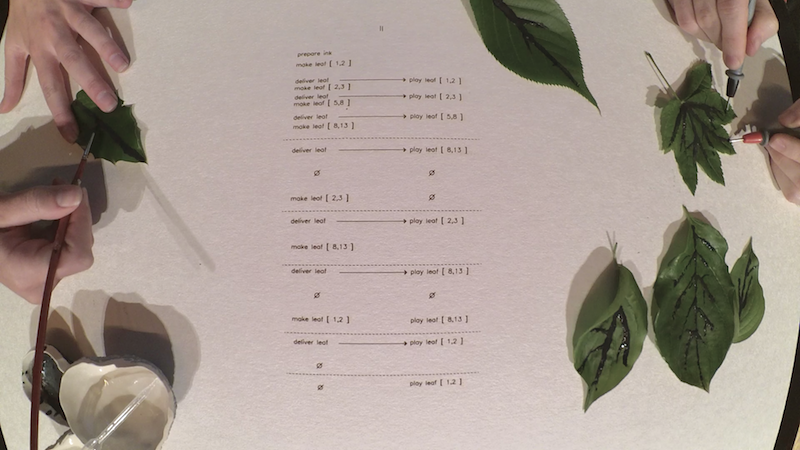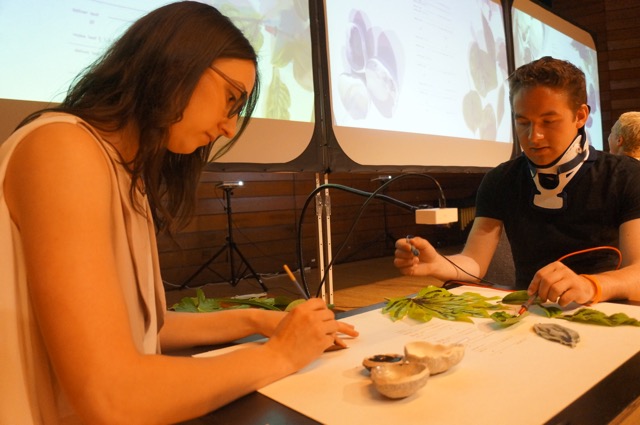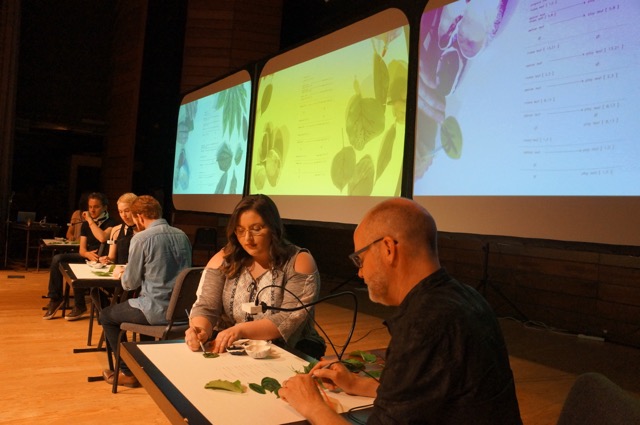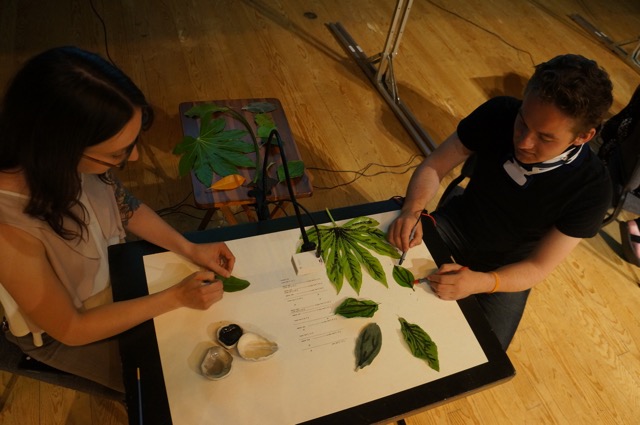Plants make sounds - if we know how to listen. There is the rustling of leaves, the creaking of branches or trunks, the lone tree falling in a forest, all created by forces external to the plant. Internally, though, rhythms are created by the formation and bursting of microscopic gas bubbles in vessels. This process of cavitation occurs at frequencies and time scales well beyond the range of human hearing.
In this performance, these events are made audible through a variety of methods of data sonification. The timing of recorded cavitation events serves as the structural backbone as well as the generator of rhythmic and timbral content. The sound of cavitation events themselves are transposed into the audible frequency and used as part of the sonic environment. All of these elements are activated by sensors that read the resistance of conductive inks drawn on plant matter collected locally in the Rogue Valley.
The data used tonight was collected from a dehydrating Prunus avium (Sweet Cherry) by researchers at the University of Ghent (Belgium) Laboratory for Plant Ecology. In an ongoing collaboration we are attempting to use audio analysis techniques to classify and study these unique plant-based sounds. Special thanks to SOU alumnus Jess Volk of Slip Studios in Ashland for making the ceramics used to hold the ingredients for the conductive ink. Their form was created from molds of the fruit of the osage orange tree.



